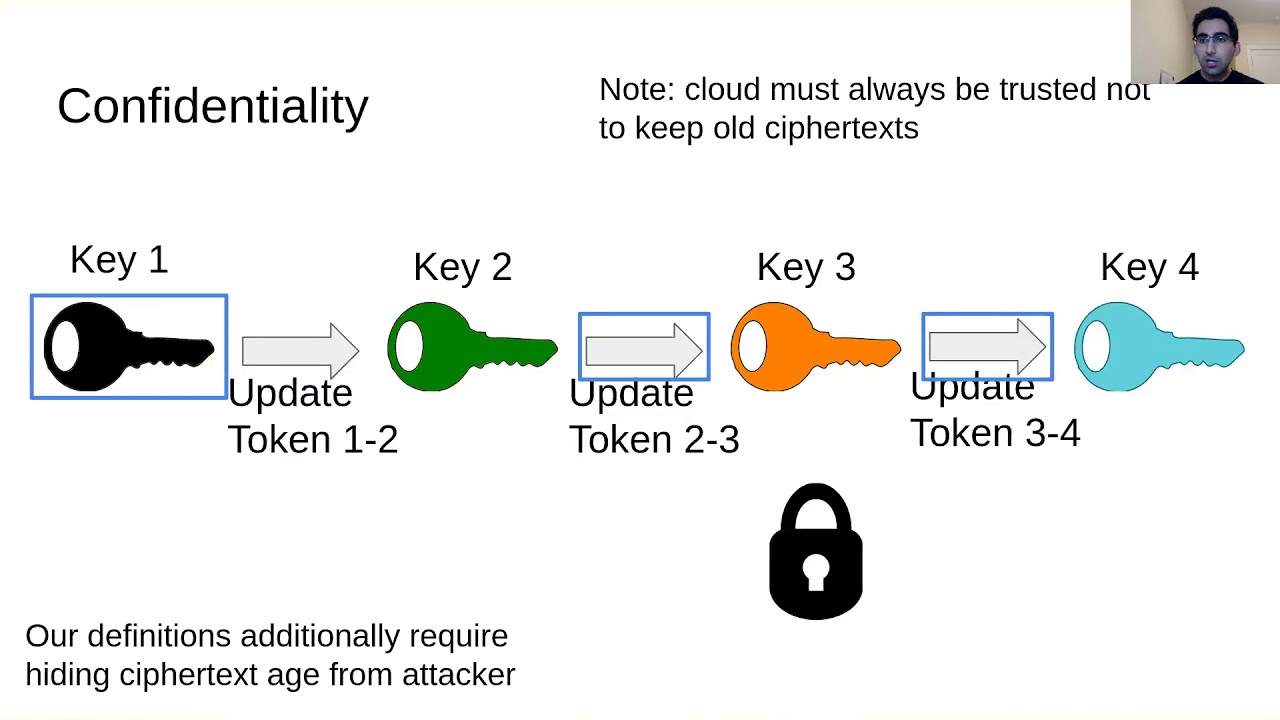Welcome to the resource topic for 2020/222
Title:
Improving Speed and Security in Updatable Encryption Schemes
Authors: Dan Boneh, Saba Eskandarian, Sam Kim, Maurice Shih
Abstract:Periodic key rotation is a common practice designed to limit the long-term power of cryptographic keys. Key rotation refers to the process of re-encrypting encrypted content under a fresh key, and overwriting the old ciphertext with the new one. When encrypted data is stored in the cloud, key rotation can be very costly: it may require downloading the entire encrypted content from the cloud, re-encrypting it on the client’s machine, and uploading the new ciphertext back to the cloud. An updatable encryption scheme is a symmetric-key encryption scheme designed to support efficient key rotation in the cloud. The data owner sends a short \emph{update token} to the cloud. This update token lets the cloud rotate the ciphertext from the old key to the new key, without learning any information about the plaintext. Recent work on updatable encryption has led to several security definitions and proposed constructions. However, existing constructions are not yet efficient enough for practical adoption, and the existing security definitions can be strengthened. In this work we make three contributions. First, we introduce stronger security definitions for updatable encryption (in the ciphertext-dependent setting) that capture desirable security properties not covered in prior work. Second, we construct two new updatable encryption schemes. The first construction relies only on symmetric cryptographic primitives, but only supports a bounded number of key rotations. The second construction supports a (nearly) unbounded number of updates, and is built from the Ring Learning with Errors (RLWE) assumption. Due to complexities of using RLWE, this scheme achieves a slightly weaker notion of integrity compared to the first. Finally, we implement both constructions and compare their performance to prior work. Our RLWE-based construction is 200x faster than a prior proposal for an updatable encryption scheme based on the hardness of elliptic curve DDH. Our first construction, based entirely on symmetric primitives, has the highest encryption throughput, approaching the performance of AES, and the highest decryption throughput on ciphertexts that were re-encrypted fewer than fifty times. For ciphertexts re-encrypted over fifty times, the RLWE construction dominates it in decryption speed.
ePrint: https://eprint.iacr.org/2020/222
Talk: https://www.youtube.com/watch?v=iZ91K2WoXwk
Slides: https://iacr.org/submit/files/slides/2020/asiacrypt/ac2020/170/slides.pdf
See all topics related to this paper.
Feel free to post resources that are related to this paper below.
Example resources include: implementations, explanation materials, talks, slides, links to previous discussions on other websites.
For more information, see the rules for Resource Topics .
